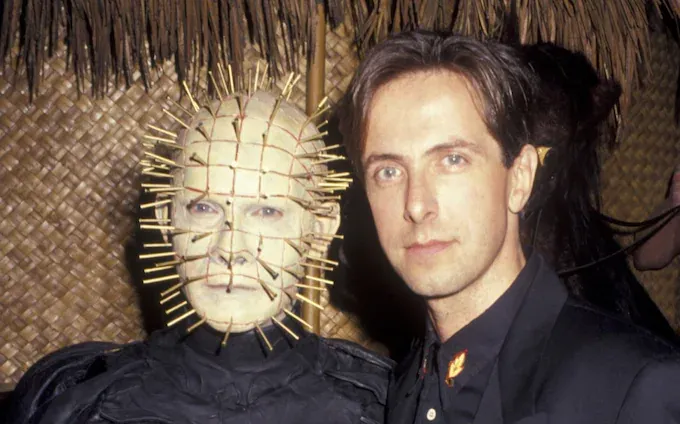H. R. Giger: The Master of Biomechanical Horror
H. R. Giger: The Master of Biomechanical Horror is one of the most iconic and influential artists in the field of horror and science fiction art. Born on February 5, 1940, in Chur, Switzerland, and passing away on May 12, 2014, in Zurich, Giger left an indelible artistic legacy through his works that combine biomechanical elements with dark and unsettling themes. His unique style has fascinated and terrified millions of people around the world, making him a legend in his field.
The Early Years and Training
Giger developed an interest in art from a young age, influenced by his personal experiences and nightmares. After studying architecture and industrial design at the School of Applied Arts in Zurich, he began exploring his unique style, characterized by a dark and futuristic aesthetic. His early works included drawings, paintings, and sculptures that reflected his interest in horror and the surreal.
The Biomechanical Aesthetic
The most distinctive aspect of Giger’s art is the fusion of organic and mechanical elements, a combination he described as “biomechanical.” This aesthetic is evident in many of his works, where human figures merge with machinery in unsettling and surreal ways. His creations evoke a sense of alienation and terror, exploring themes such as birth, death, sexuality, and technology.
“Necronomicon” and Collaboration with Ridley Scott
![]() In 1977, Giger published “Necronomicon,” a collection of his works that included disturbing and fascinating drawings and paintings. This book caught the attention of director Ridley Scott, who was working on a new science fiction film called “Alien.” Scott was so impressed by Giger’s art that he hired him to create the design of the alien monster and other visual elements of the film.
In 1977, Giger published “Necronomicon,” a collection of his works that included disturbing and fascinating drawings and paintings. This book caught the attention of director Ridley Scott, who was working on a new science fiction film called “Alien.” Scott was so impressed by Giger’s art that he hired him to create the design of the alien monster and other visual elements of the film.
The result was the Xenomorph, one of the most iconic and terrifying creatures in film history. Giger’s design for the Xenomorph, with its sleek yet menacing forms and its combination of organic and mechanical elements, contributed significantly to the success and visual impact of “Alien.” For his work on “Alien,” Giger won the Academy Award for Best Visual Effects in 1980, solidifying his international fame.
Sculptural Works and Installations
In addition to his work in cinema, Giger is also known for his sculptures and installations. One of his most famous works is the “Biomechanical Landscape,” a series of sculptures depicting a haunting and surreal landscape populated by biomechanical creatures. His sculptures, often made of materials like bronze and resin, are characterized by an impressive level of detail and realism.
Giger also created numerous pieces of furniture and design objects, including the famous “Harkonnen Chairs” for an unmade film adaptation of “Dune.” These chairs, with their gothic and organic design, have become iconic in the world of design.
The H. R. Giger Museum
 In 1998, Giger opened his own museum in Gruyères, Switzerland. The H. R. Giger Museum houses a vast collection of his works, including paintings, drawings, sculptures, and design projects. The museum offers visitors a complete immersion into Giger’s dark and fascinating universe, allowing them to appreciate up close his extraordinary artistic skill and unique vision.
In 1998, Giger opened his own museum in Gruyères, Switzerland. The H. R. Giger Museum houses a vast collection of his works, including paintings, drawings, sculptures, and design projects. The museum offers visitors a complete immersion into Giger’s dark and fascinating universe, allowing them to appreciate up close his extraordinary artistic skill and unique vision.
Legacy and Influence
H. R. Giger’s influence extends well beyond the world of art and cinema. His unique style has inspired numerous artists, designers, filmmakers, and video game creators. Giger collaborated with many musical bands, creating iconic album covers, such as those for Emerson, Lake & Palmer’s “Brain Salad Surgery” and Celtic Frost’s “To Mega Therion.”
His biomechanical aesthetic has also influenced the design of video games, comics, and other forms of visual media. His ability to evoke terror and wonder through art has made his works timeless and always relevant.
Conclusion
H. R. Giger, The Master of Biomechanical Horror, was a true pioneer in horror and science fiction art, creating a unique aesthetic that continues to influence and inspire. His ability to combine organic and mechanical elements in unsettling and fascinating ways made his works instantly recognizable and deeply evocative. Through his work on “Alien” and his many other creations, Giger left an indelible mark on the world of art and popular culture, cementing his place as one of the greatest horror artists of all time.
In the post “The Best Horror Sculptors in History” you can explore the fascinating world of horror sculpture and celebrate the extraordinary talents that brought these unforgettable works to life… The Best Horror Sculptors in History.
Subscribe to our YouTube channel







